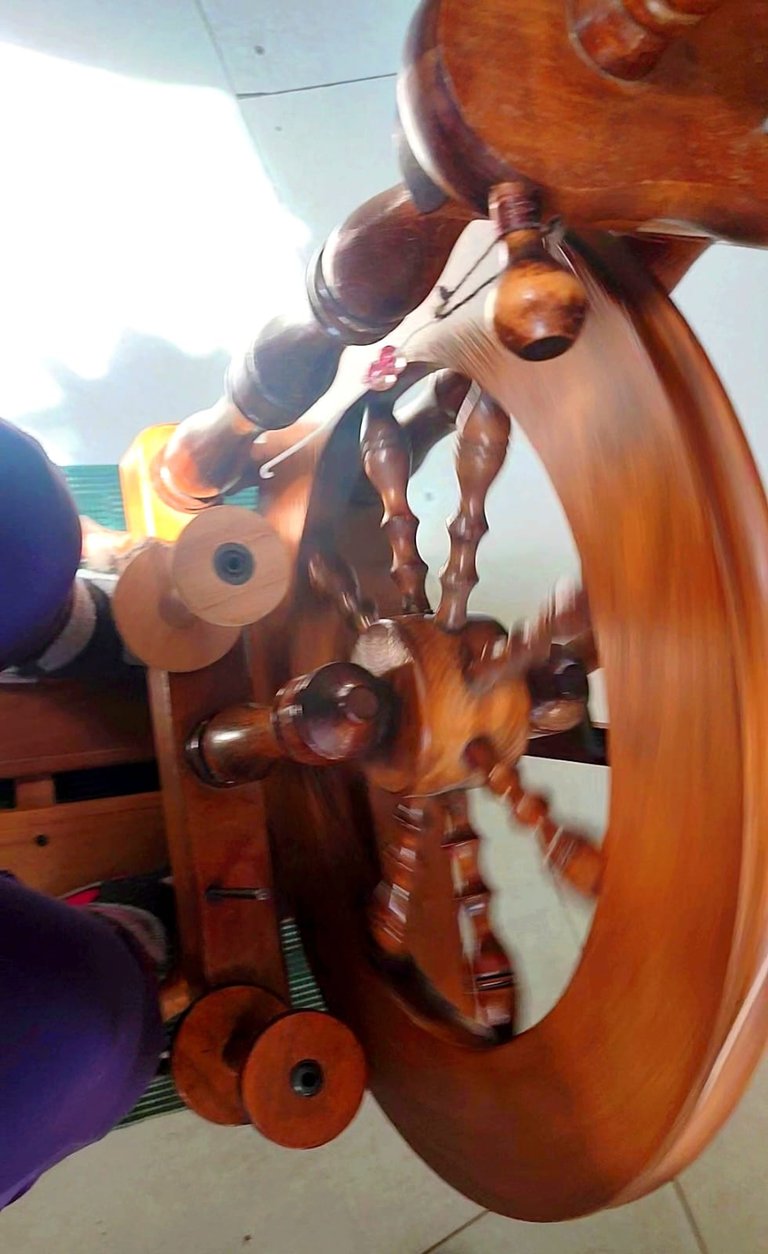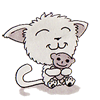
I had been admiring different types of yarn recently, especially the handspun ones, and I wanted to explore the mechanical side so I grabbed a little spinning course last weekend facilitated by our local sewing shop The Fibreworks. We had a lovely teacher, Chris Seers who owns the Wychwood Spinner.
Check out her works on Etsy.

In the story of Sleeping Beauty, where the princess pricks her finger on a spindle and falls into a deep sleep entails that spinning is deeply woven into the cultural fabric of many societies.
Spinning has symbolic significance across cultures. It represents creativity, productivity, and the cycle of life.

During the training, we familiarized ourselves with how the spinning wheel works, the techniques, and the tools.

Over a cup of tea, we learned about the type of materials used. Carding is an essential step in preparing fibers for spinning.


Different breeds of sheep and alpacas produce different feel. Alpaca is softer but it needs at least 30% wool to hold its shape. Labeling each skein with important information such as the fiber type, spinning technique, yardage, and date spun. This will help keep track of yarn inventory and ensure consistent results in future projects.

We initially practiced the rhythm using cotton yarn and also troubleshooting.

It was difficult at first but I think I managed ok.-

Using the carded wool was harder than I thought! Pedaling while simultaneously pinching with one hand, feeding the yarn, and pulling the carded wool with the other hand, all while paying attention to the thickness and consistency of the yarn as I spin!

Keeping the hands relaxed but firm and maintaining a consistent rhythm.

It is all about rhythm, just like drumming or playing piano! It is something that gets better with practice.

My first handspun yarn, I struggled at some point and had lumps in there.

Making a loose figure of 8 to prevent tangling during storage.

By twisting both ends, produces tension and the yarn turns to this!
Then I realized that the mechanism is the same as making a string from fibers, I had been watching my grandad when I was 6 making this without using any kit and I was very entertained, basically just using both hands and rolling the fibers on the leg, which later in life I used the technique myself. It is all about tensions and letting the fiber work its way.

I enjoyed the whole process, at home and excitedly experimented on my first handspun yarn.

It wasn't long enough so I planned to make a coaster without following any pattern. I made 12 double crochet in a ring and double crochet all though but doubling the numbers.

Then I created 4 chains and intermittently a slide stitch to create slopes.

The length of the yarn I made was just enough to finish a decent-sized coaster.
The feeling of creating it from scratch is very unique, even though I could see some flaws in the yarn, it was more special.

Then I decided to embellish it.


Sewing the little pearl beads.


The beads are sitting in between the slopes.

It's a decent-sized coaster for my big cup, and I'm very pleased with my special creation today. I'm also happy with the new skill I've acquired; I just need to improve it!
Have a wonderful Monday, everyone, full of creativity and joy!
Mariah 💖



